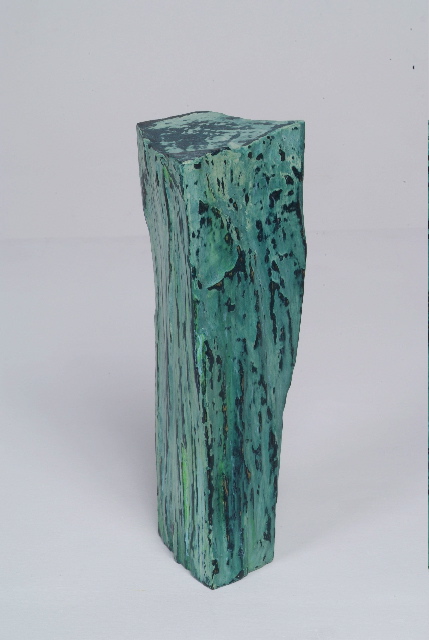My philosophy on fine arts: why shall I still paint today? (…when there are far too many other possibilities to create/generate pictures today)
- The body of colour
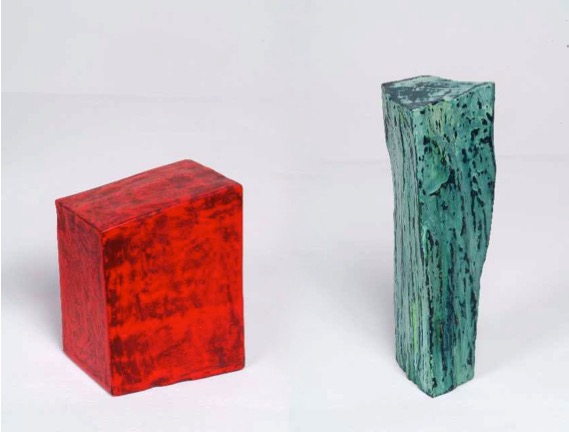
„Klötze“ 1995, ca. 30 X 10 X 15 cm
Tempera, oil and wax on wood
When you paint a painting, you inevitably create a corpus. On the one hand, as a conglomerate of raw materials, but on the other it reflects the corpus’s character: the corpus is charged in its own, specific way. This charge can be different in nature. However, it depends on which artistic means the painter has used.
In 1984/85, I began using pieces of wood as carriers for small, three D. works. Each of these pieces of wood is part of an organic whole, a piece of a tree.
Covering every side of this piece with a skin of paint made it into a whole again. When you do that, the coat of paint (as a substantial material and not just as an optical appearance of colour) encloses the piece like a skin and seals it as a body, as a unit or an integrated whole. But because of the way it has been painted and grinded, the immanent dynamic of the wood, the way it is organically grown, remains clearly visible. Organising the colours on such a piece can uncover a very different spatial appearance than one would expect from the three-dimensional fact.
And isn’t it basically energy that creates this new space? A painting as a battery! If you look at it this way, colours create a charge – not the paint, the colour itself. It is charge that overrides the dimensions of the pieces of wood and disengages from their corpus. (…)
In this respect, there is not much point in imitating nature, copying it formally. My focus is to address the creation of a painting, to develop its formation by making use of the potentials of colour. You can only create a whole in terms of process of formation; in terms of nature you can only ever create a clipping. I was never interested in that.
- Colour and Space
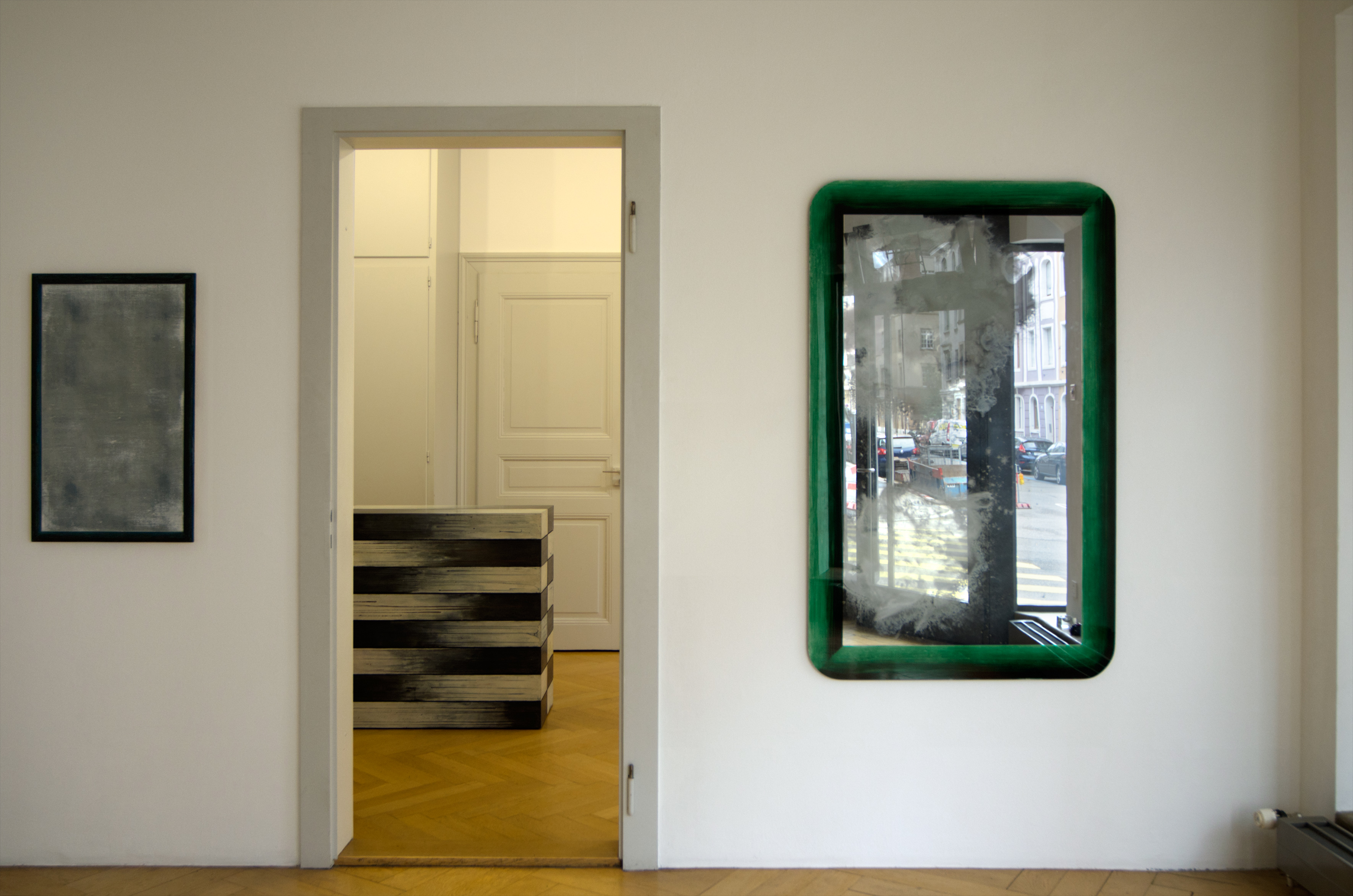
Exhibition view Basel, Switzerland 2012
From skin to space
Visual cognition of the material world basically could be understood as a reception of colours and shapes. In our eyes we differentiate colours and shapes and seem to recognize things.
While fabricating a painting at first colour is always material (paint for instance).
We do work with substances, materials to give some non-substantial quality to our work. Beside many other also eminent features, one specific quality is the possibility to experience space. Interaction of colour may evoke an illusion of three-dimensionality.
An illusion?
Through colour “things” become images, images become views of the world (conception of the world). 、
A painting itself is a three-dimensional fact (first spacial feature).
A painting may evoke a spatial illusion (second spatial feature).
A painting is positioned at the wall, in a room (third spatial feature).
- Painting as a method to enlarge/enhance self-awareness
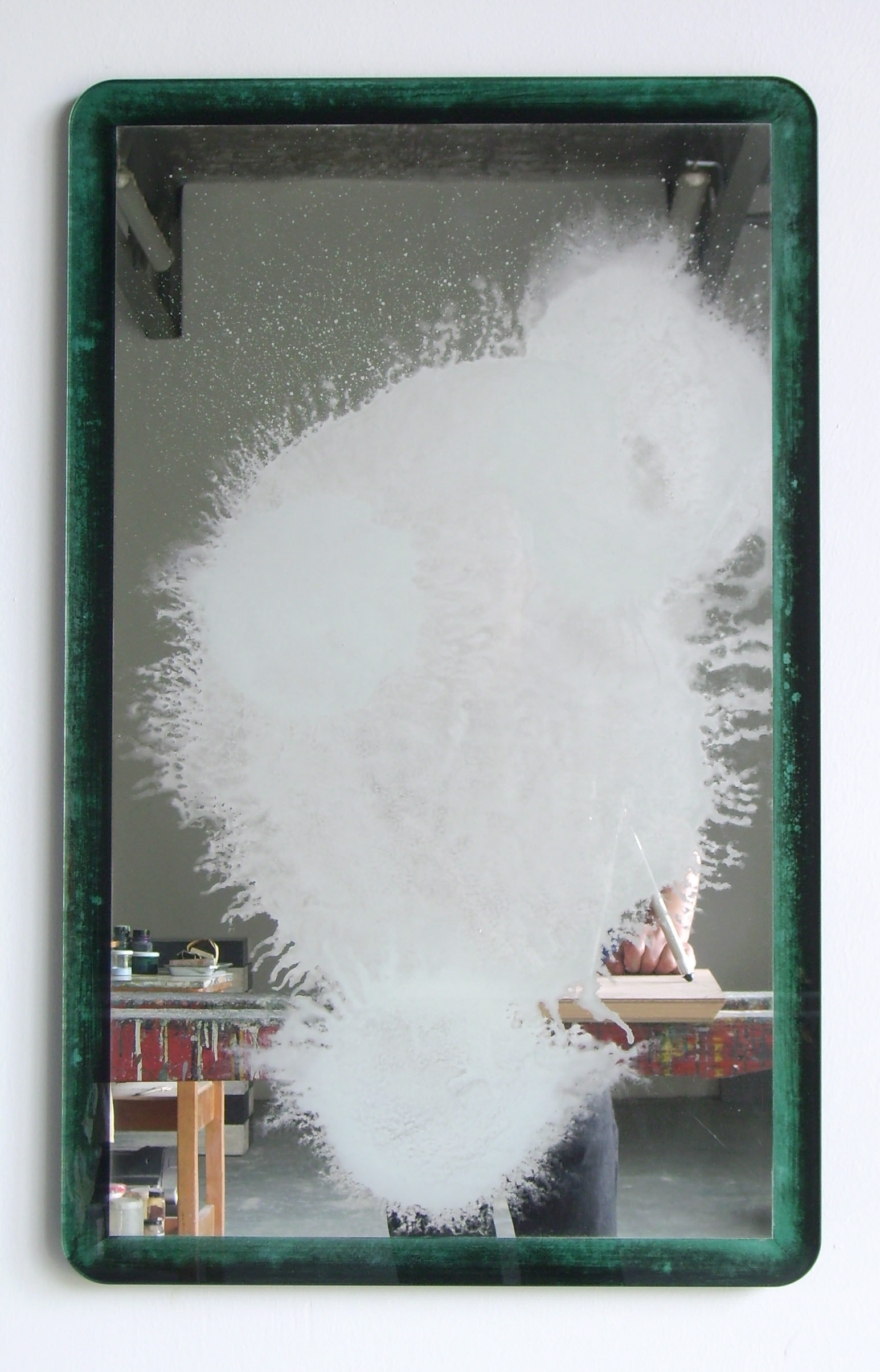
Oubliette, 2011, 77 X 48 cm
Glass painting, metal-coated
The word “reflection”, besides referring to an optical phenomenon, also means the attempt to gain new insights through perception. This is tradition. Many artists from Diego Velazques to Gerhard Richter have turned it into a subject of their work. From perception to self-perception and back. That has always been an interesting journey and still is.
And maybe the first image ever was a mirror: when the prehistoric man first recognised his image in a puddle of water. Wow! Shortly after that, Narcissus had to find out: you mustn’t fall in love with your mirror image, your reflection. But that’s a different story, isn’t it?
- Art is when Will is singing.
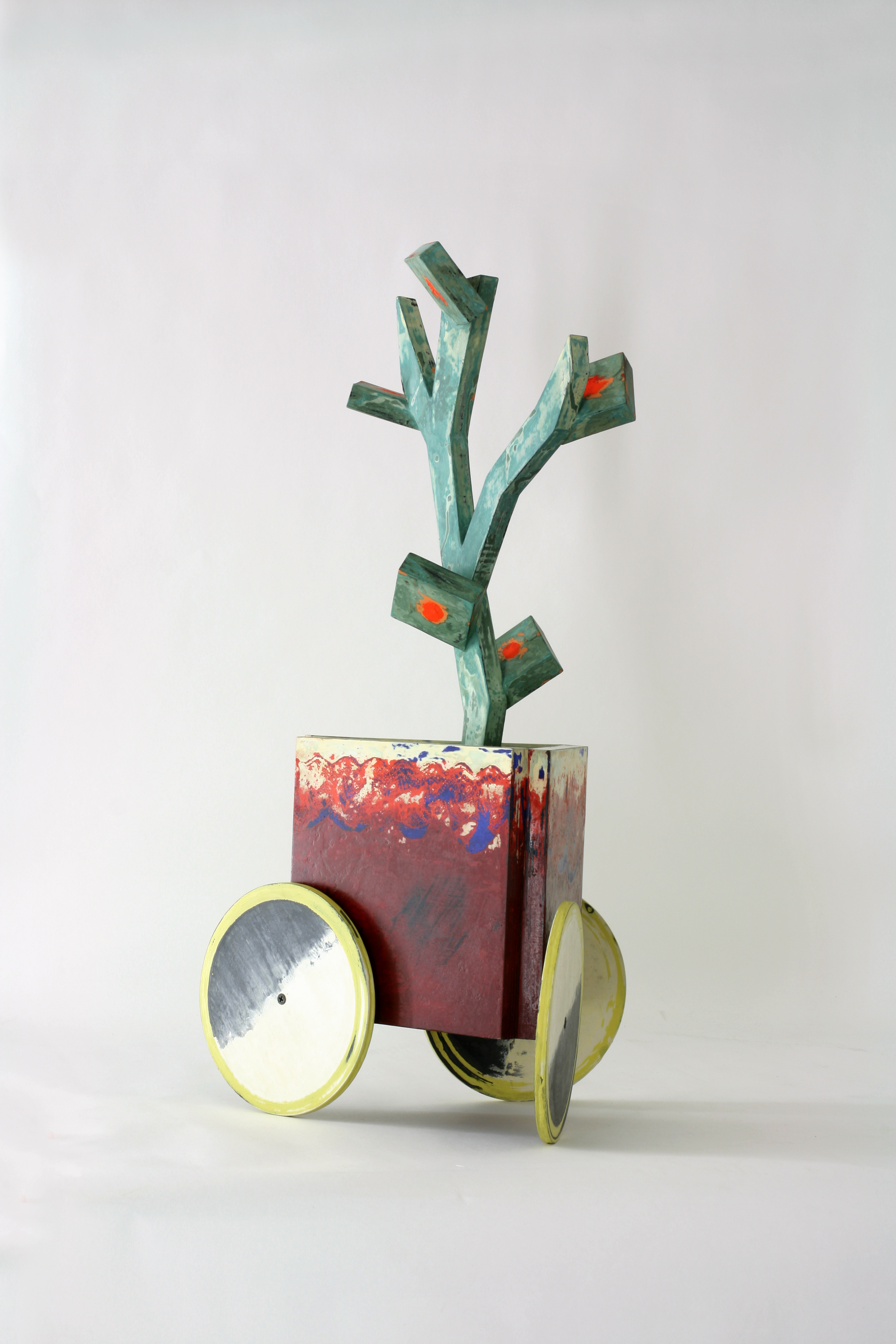
“Fortschrittsbäumchen”, 2011, 70 X 24 X 24 cm
tempera, oil on wood
Inspiration? Processing paintings without declared aim. The purpose is to make the painting paint itself.
- Troy horses
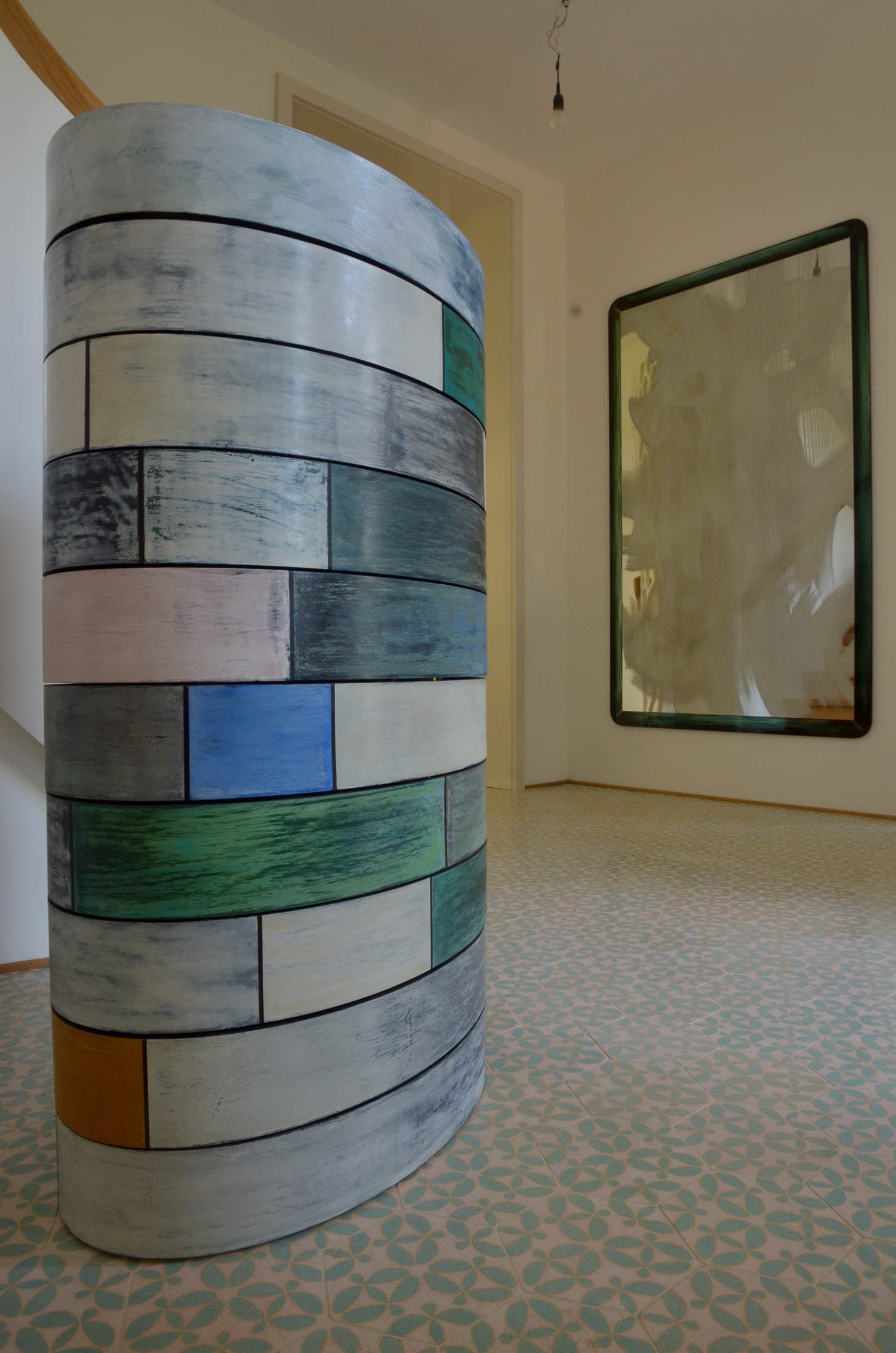
Ouroboros, 2010, 120 X 60 X 40 cm
oil-paint, tempera and wax on plywood – chassis
My sculptures are called Troy Horses. They are 3-D colour-field paintings. They can be used as furniture but they don’t appear to be furniture. All openings are hidden within the composition of colours. All sides of the sculpture are painted, rendering it to appear as a seemingly typical sculpture set. “Troy horse” is used to depict the dual nature/feature of the art piece. However as the viewers approach it closer and explore it more exhaustively, they will experience a journey/discovery on how an illusion of colours (a painting) develops into a 3-D substance (a sculpture) and further evolves into something of practical usages/applications (a function, e.g., a furniture).
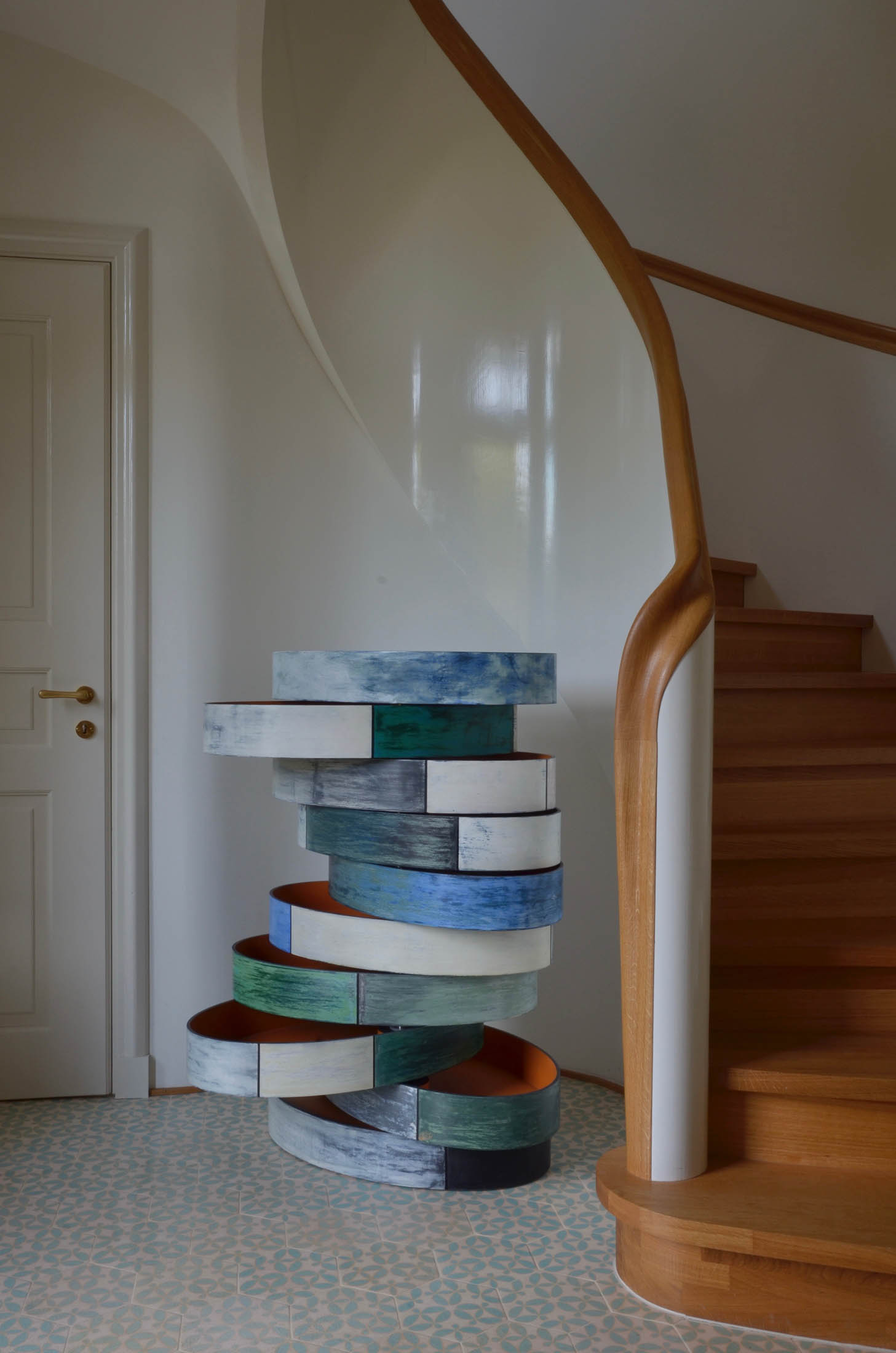
Ouroboros, 2010, 120 X 60 X 40 cm
oil-paint, tempera and wax on plywood – chassis
Therefore the function of the sculpture as furniture plays the trick to hook the originally befuddled viewers out of the woods and to propel them to leap over the gap between them and abstract arts.
- Panel Paintings
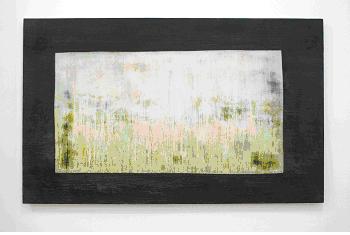
Robur , 2004, 89 X 144 cm
oil-paint, tempera and wax on plywood – chassis
All paintings appear framed. The frame evokes an illusion of a view through a window. But the frame itself is a part of the illusion. The frames appear 3-D. As the conventional 2-D paintings may incline the viewers to neglect/ignore the fact of paintings‘ being objects, the impluse of the viewer to “peer” through the “window”, as prompted by the frame, seems to do just the opposite, i.e., bringing back the experiences of the objects.
My painting does not represent anything else but a painting.
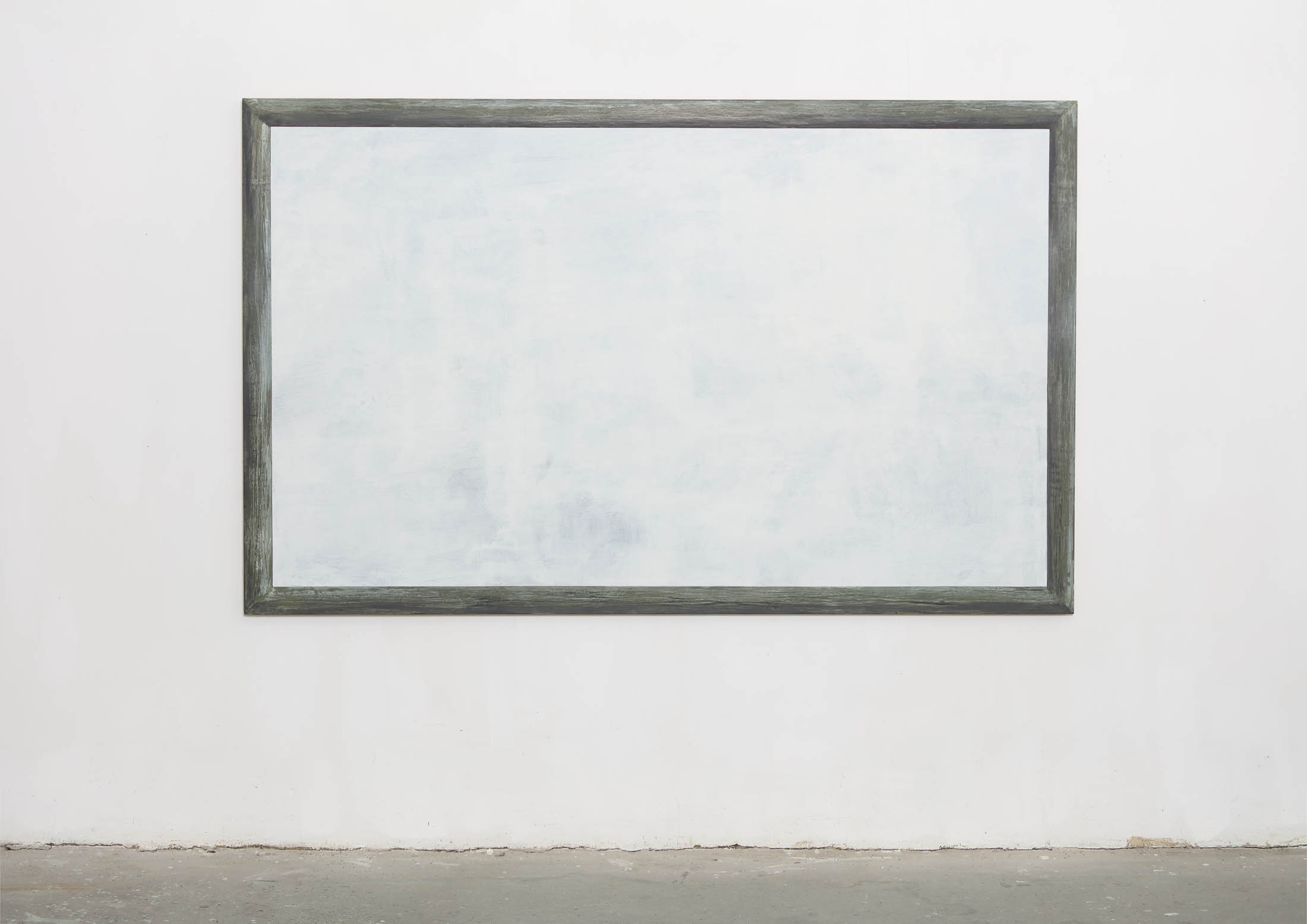
Schöne Aussicht,2013,144 X 233 cm
oil-paint, tempera and wax on plywood – chassis
